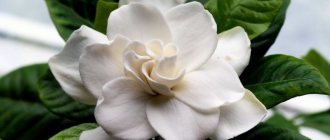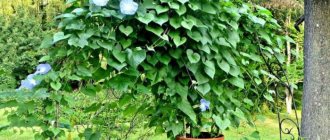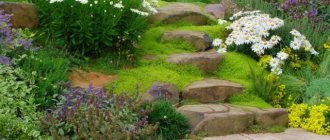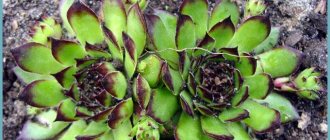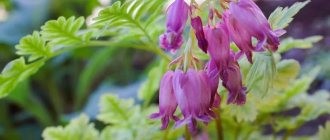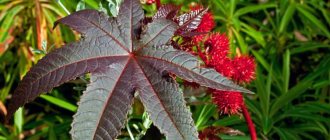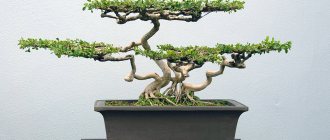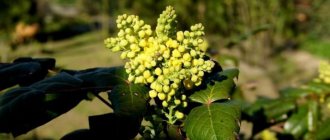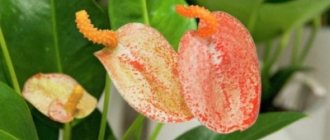Story
The original idea to create a Japanese bonsai tree belongs to China. It was there that the unusual art of “Penjing” was born. There is a long-standing legend that a certain ruler wanted a small empire that would have trees, mountains, and rivers. When the subordinates began to carry out the order, they liked the potted trees so much that they decided to create copies and keep them.
It is not known for certain whether this is true or not, but there are obvious facts: Buddhist monks were the first to use the home bonsai tree. Later they were used during ceremonies.
Garden bonsai: Japanese motifs in the Central Russian garden
The ancient art of growing dwarf trees in pots has spread throughout the world, turning from a pastime of the Japanese aristocracy into a mass hobby.
Over many centuries, the Japanese have learned to form miniature copies of trees growing in natural conditions. In Japan, this art has reached enormous development and today represents a whole science with numerous schools and shaping techniques that make it possible to obtain plants of various configurations: straight, asymmetrical, oblique, “bent by the wind,” “weeping,” cascading and others. These forms are inspired by the very nature of Japan, where in a special climate plants acquire harmonious, perfect silhouettes. Bonsai - an ancient art of Japan
Recently, Russian gardeners are increasingly using oriental styles in design, and creating bonsai in the open ground is undoubtedly a fashionable and promising trend. The formation of a garden bonsai differs little from the traditional one, however, familiar techniques for working with woody plants are used: pruning, pinching and grafting.
The sizes of garden bonsai, unlike the canonical Japanese ones, are arbitrary. The starting material can be an old fruit tree, an unsightly twisted bush in the corner of the garden, an unusual specimen found in nature and, of course, a young plant. Take a closer look at the plants in your garden, maybe some of them are already ready to be made into a bonsai?
Garden bonsai, unlike canonical ones, can have arbitrary sizes. Photo by the author
It happens that within just a few years of targeted pruning, a nondescript tree with bare trunks and twigs sticking out in all directions can be transformed into attractive, unusual oriental-style trees.
Many people probably have old apple or cherry trees , which have not yielded good results for a long time and look sloppy. Try to remove all the small branches on the lower part of the crown so that the main trunk is clearly visible, and in the spring trim the top of the crown parallel to the ground. By repeating these steps annually, you will form dense caps of foliage in the upper part of the crown on a graceful curving trunk. Soon you will see how the silhouette of the tree changes, and you will enjoy this completely easy gardening work.
With coniferous plants, the result can be more spectacular, but the formation process is longer. For example, the dense and dense crown of a mountain pine, which has pleased you for many years, begins to become sparse and loose. A great reason to start shaping!
The formation of coniferous plants takes time, but produces impressive results. Photo by the author
Look inside the crown and highlight several branches that form a beautiful silhouette. Cut out the remaining branches without regret, and at the beginning of summer, when the buds begin to grow, pinch them, leaving 1–2 cm. By the next season, many new buds will form in the upper part of the crown, and they will give rise to a new beautiful crown in the form of a cloud.
The same can be done with Scots pine . The only thing is that, along with pinching the shoots and thinning the crown, the branches of Scots pine will have to be fixed in a horizontal position. Typically, thick wire is used, weights are tied, or ropes are pulled. This is necessary to maintain the tiered shape of the crown, otherwise, without fixation, the branches begin to “puff up” and the space between the tiers closes.
When forming the crown, branches sometimes have to be fixed with weights. Photo by the author
I note that of all the conifers, Scots pine and mountain pine are the most suitable material for garden bonsai in the middle zone. There is no need to be afraid to cut out unnecessary branches, because pines are very flexible trees, thanks to their abilities they were able to adapt to the harsh conditions of nature - the drying winds of the highlands and the bitter frosts of the north.
Pines take the desired shape with great pleasure, the main thing is to help them. At the same time, the gardener himself will comprehend harmony and develop taste, bringing the form to perfection. In addition, working with form is a passion for many years, and the result is an exclusive and unusual plant that delights owners and surprises guests.
Pine trees take the desired shape with great pleasure - all you need to do is give them a little help. Photo by the author
In addition to pines, other conifers are also suitable for creating garden bonsai. European larch is very resistant and tolerant of pruning and middle juniper and pea cypress are developing well . You can try to work with varieties of common spruce .
Remember that pines do not know how to bud on the woody shoots of the previous year, so you can only pinch out young candle shoots at the beginning of summer, and junipers, larches, spruce and cypress trees can be cut at any time, even with scissors.
Garden bonsai can be formed not only from pines, but also from other conifers. Photo by the author
Among the deciduous trees suitable for our climate are hawthorns , maples , oak , as well as fruit trees - apple trees , cherries . Despite the small variety, these trees are resistant to our climate and tolerate shaping well.
You can select suitable planting material for your garden experiments in our catalog, where a wide range of products from well-known online stores of planting material and seeds are presented. Choose plants for your garden.
7 COLORS Plant Juniperus virginiana Blue Arrow C7 D25 H125 RUB 2,899
OBI
7 COLORS Plant Juniper medium Old Gold C1 D13 H30 499 RUR
OBI
7 COLORS Seedling Juniper horizontal Andorra Compact C2 H20-25 RUR 749
OBI
7 COLORS Seedling Juniper medium Mint Julep C5 H30-40 RUR 1,899
OBI
Recently, ready-made bonsai, grown in a nursery and suitable for planting in open ground, have appeared on sale.
These are usually multi-trunked versions of Scots or mountain pine that have dense green caps of needles formed. Such plants, as a rule, are very expensive and do not always look harmonious, so they can be considered as material for creating a more perfect tree, from the owner’s point of view. In any case, after planting, you will have to care for them, continuing the work begun in the nursery - annually pinch the shoots and cut out excess branches, otherwise your bonsai will turn into an ordinary tree. If you know the grafting technique, then the process of creating a bonsai can be somewhat speeded up: graft several cuttings of a dwarf variety onto a tall rootstock (for example, pine), thus creating a multi-tiered plant at once. The advantage of this method is that pinching of shoots will not be required in the future, since the grafted variety is dwarf.
To make your bonsai look harmonious, the right environment is important. Photo by the author
When creating a bonsai, do not forget that this is not only a formed tree, but also its harmonious combination with the surrounding space . Bonsai is a self-sufficient work of art, closely related to the other elements of the composition, as it imitates a piece of nature in miniature.
Agree that your masterpiece will look somewhat ridiculous if there are nettles or beds of strawberries growing around. Therefore, to give an oriental flavor and support the overall style in the garden, trim everything! Favorite shrubs - spirea, barberry, dogwood and even clumps of perennials will be an excellent addition to mature trees if you give them smooth, streamlined outlines with regular pruning.
In addition, plants that are similar in appearance to plants of the Japanese flora will add a zest. For example, instead of mosses, you can grow saxifrage, sedum, azorella, some types of bryozoans, and astilbe will look good in the shade. Strive to make the composition harmonious, and the garden itself will tell you what changes are necessary.
Konstantin Korzhavin
How to identify a tree?
There are several signs:
- Pronounced root system.
- Clear branches, the course of which can be followed.
- The trunk can be seen even through the foliage.
- Similarity to the original tree.
Symbolism
Previously, it was believed that every person who managed to grow a tree could be considered a god. This is easily explained by their religion: in the Buddhist view, the whole world is an evergreen garden, and God is the gardener.
And of course, you shouldn’t immediately count on success in such a complex matter. Some try to grow it for years, constantly watching and caring for it. It symbolizes:
- Justice.
- Goodwill.
- Wisdom.
- Delicacy.
- Excerpt.
Basically, types of bonsai are distributed according to the seasons in which they bloom: spring, summer, autumn, or having an attractive appearance throughout the year.
Zanthoxylum
This plant is also known to us as yellowwood and pepper tree, although the fragrant leaves of the plant do not smell like pepper, but like lemon, since zanthoxylums are relatives of citrus fruits. It is this crop that brings the harvest of the legendary Sichuan pepper.
Zanthoxylum is often viewed as a plant for greenhouses only, but in fact, it is one of the most unpretentious types of indoor bonsai.
Pepper tree is an evergreen tree and shrub, most often grown in bonsai as a tree with a single trunk. The plant is characterized by beautiful, dark bark with an unusual golden-grayish tint and a very dense large-leaved crown.
The feathery leaves of Zanthoxylum, which emit a pleasant lemon aroma when touched, are dark green in color and can reach a record length of 15 cm for a bonsai. Zanthoxylum blooms from April to June. The plant produces dioecious golden flowers in small panicles of inflorescences.
For bonsai, you need to ensure stable soil moisture by watering frequently, but with a small amount of water. Rainwater is more suitable for zanthoxylum. When choosing conditions, it is worth focusing on the brightest window sills - sunny places, regardless of the time of year. Zanthoxylum should be protected from exposure to air conditioners or heating devices. The plant does not have to be taken out into the fresh air for the summer.
The formation of zanthoxylum must be carried out constantly, pruning young branches to create the desired silhouette. If the plant has been shaped to a certain shape, then the young shoots are cut back to their original contours, preventing them from growing in length.
In winter, zanthoxylums are kept cool, but the plant cannot tolerate temperatures dropping below 10 degrees Celsius. The optimal temperature value is from 12 to 15 degrees.
What plants are suitable for growing in our climate?
Many people wonder: how to grow a bonsai tree at home? And there is no definite answer to it. The only thing worth remembering is that this tree cannot be in the room. It is not suitable for home conditions. But outside, with protection from rain and wind, it’s calm. And now you will find out how.
First, you need to decide what kind of bonsai tree seeds you want to grow. Perfect for Russia: juniper, pine, spruce, thuja, lilac, cherry, apple, pear, larch, barberry, maple, viburnum.
The most popular are olive, tea tree, elm or a combination. Regular deep containers are suitable for them.
How to grow?
Be prepared to take care of your plant for several years. First for the seed, then for the sprout and finally for the tree.
To get started, you will need a special kit consisting of:
- Instructions.
- Ground.
- Pot.
- Semyon.
- Fertilizers.
Over the long term you will need:
- Trim the plant.
- Maintain soil in favorable condition.
- Maintain temperature (10-18 degrees).
- Avoid exposure to sunlight.
- Prevent drafts.
- Water the plant on time.
Periodically, nitrogen, phosphorus and potassium must be added to the fertilizer. And be patient.
Ficus microcarpa
This type of ficus is known throughout the world under several other names - ficus bonsai or ficus ginseng. Miniature by nature, easy to shape, these bonsai trees reveal all their beauty thanks to their numerous aerial roots.
Ficus microcarpa is considered one of the best species for beginners to get acquainted with the art of bonsai. This culture feels good both in living rooms and in greenhouses.
Ficus microcarpa is an evergreen tree whose pale, light and shiny, strikingly thin bark contrasts beautifully with its dark, glossy greenery. Microcarp is characterized by an interesting feature: it always seems larger, more voluminous and more magnificent than its actual dimensions. It's all about the thick crown with tightly seated leaves and a massive trunk. Outwardly, this ficus would be no different from everyone's favorite Ficus Benjamin, but in bonsai form it becomes a real star.
One of the main advantages of the plant is the rapid formation of powerful roots and trunk, thickenings on the aerial roots. Lanceolate or lanceolate-oval, broadly or narrow-leaved forms of ficus retain an unchanged feature - dark green, rich color.
Interesting on the topic:
I carefully care for hydrangea at the end of summer - I ensure...
Mar 5, 2022
I reveal the subtleties of growing tulips: planting beds...
Mar 5, 2022
Growing microcarpa bonsai is not at all difficult. The plant likes a stable room temperature almost throughout the year, and if you avoid excessive heat or sudden changes, problems will not arise. The higher the air humidity, the more decorative the leaves. Watering is carried out with restraint; in the summer, not only the classic method is used, but also immersion of all the roots and trunk of the plant in water.
For ficus microcarps use settled or rain water. Like all bonsai, ficus microcarpa will prefer to spend its summer outdoors. True, this plant can only be grown from May to September, when even at night temperatures do not drop below 15 degrees.
Ficus trees are most often grown in an upright form: this is the only way that picturesque formations of numerous aerial roots will eventually form around the main trunk and it is possible to give the trunk itself a bizarre shape. Ficus trees are well shaped by both regular trimming and wire trimming.
Ficus microcarpa prefers to overwinter indoors, but does not like heat or proximity to heating devices. The optimal temperature is not lower than 15 degrees and not higher than 20 degrees Celsius.
